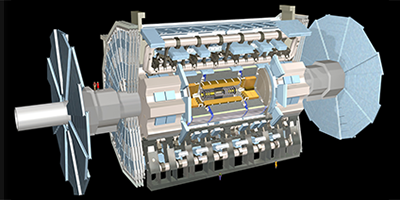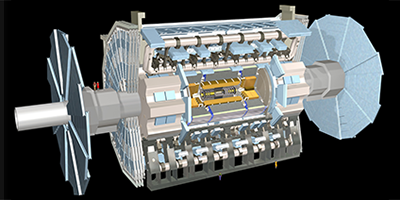Higgs Mass Comes into Clearer Focus
The announcement of the discovery of the Higgs boson by CERN in 2012 electrified the world but left the need to fully characterize its properties, especially its mass value. Not only is the mass an essential feature of any particle, but knowing the Higgs mass is especially important for a complete understanding of the entire particle physics edifice. This is because the Higgs mass cannot be predicted by the standard model; instead, filling in the value by experimental measurement then feeds into other parameters connecting the Higgs to other particles.
To do this, ATLAS and CMS—the two teams at CERN’s Large Hadron Collider that announced the Higgs discovery—worked on measuring the Higgs mass by analyzing collisions of protons, publishing their results in 2013 and 2014, respectively. In a paper in Physical Review D, the ATLAS collaboration now reports an improved analysis of the same dataset, focusing on two Higgs decay paths: Higgs two photons, and Higgs two Z bosons, which then decay into four leptons (electrons, positrons, muons, and antimuons). The combined measurement gives a value for the Higgs mass of = (statistical uncertainty) (systematic uncertainty) giga-electron-volts, with the systematic uncertainty reduced by a factor of 3.
To accomplish this, the ATLAS team did a thorough reworking of two measurement’s facets: a more precise calibration of each element of the detectors to minimize systematic uncertainties, and an improved statistical analysis that better separates the signal from the background. With the more accurate mass value in hand, theorists could obtain more precise expectations for the production and decays of the Higgs boson at the LHC, which will help establish if there are signs of new, beyond-standard-model physics. – David Voss





